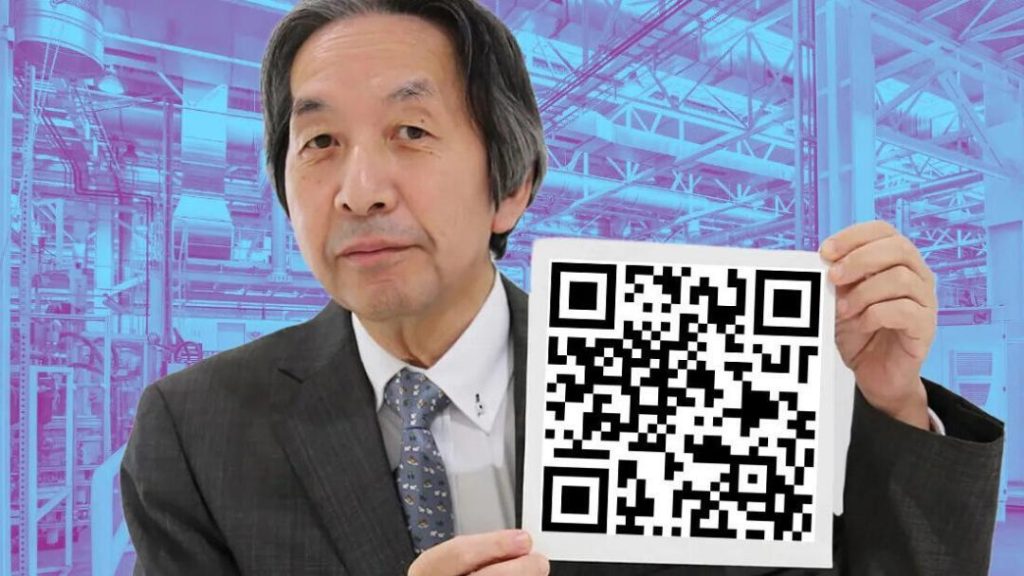
How a Japanese Invented the QR Code to Replace Barcodes
In the era of digital transformation, the term “QR code” has become a household name. These two-dimensional matrix codes have revolutionized the way we share information, make payments, and access digital content. But have you ever wondered who invented this innovative technology? The answer lies in Japan, where a brilliant inventor named Masahiro Hara created the QR code in 1994. In this blog post, we’ll explore the story behind the QR code’s invention, its original purpose, and how it has transformed the way we live and work.
The Birth of QR Code
Masahiro Hara, an engineer at Denso Wave, a Japanese technology company, was tasked with finding a solution to improve the tracking of automotive parts. At the time, barcodes were the dominant method for identifying and tracking products, but they had several limitations. Barcodes could only store a limited amount of data, and they were also prone to errors due to their linear structure.
Hara was inspired by the game of Go, a traditional Japanese board game that involves complex patterns and strategies. He realized that a similar approach could be applied to create a more efficient and robust tracking system. The result was the QR code, a two-dimensional matrix that combines black and white squares to store data.
The Original Purpose of QR Code
Initially, the QR code was designed specifically for industrial use. Denso Wave developed the technology to track and manage automotive parts, such as engine components and tires. The QR code’s ability to store large amounts of data and its high accuracy made it an ideal solution for this purpose.
In fact, the first QR code was used to track parts in Toyota’s manufacturing process. The code was printed on labels and attached to the parts, allowing workers to quickly scan and identify the components. This innovation improved the efficiency and accuracy of the manufacturing process, reducing errors and increasing productivity.
From Industrial Use to Global Adoption
The QR code’s success in the industrial sector soon led to its adoption in other areas. In the early 2000s, the technology began to be used in retail, logistics, and healthcare. Consumers started using QR codes to access product information, track packages, and share content.
The widespread adoption of smartphones further accelerated the QR code’s popularity. With the introduction of mobile apps and mobile payment systems, QR codes became a convenient way to make payments, transfer data, and access digital content.
The Evolution of QR Code Technology
Over the years, QR code technology has undergone significant improvements. The introduction of augmented reality (AR) and artificial intelligence (AI) has enabled the development of more sophisticated QR code applications.
For example, some QR codes can now be used for authentication and verification purposes. These codes can be used to verify the authenticity of products, documents, and digital transactions.
Another development is the use of QR codes in marketing and advertising. Businesses are using QR codes to engage with customers, promote products, and track consumer behavior.
The Future of QR Code Technology
As technology continues to evolve, the potential applications of QR codes are vast and varied. Some of the areas where QR code technology is likely to make a significant impact include:
- Contactless Payments: QR codes are becoming a popular method for making contactless payments. With the rise of mobile payments, QR codes are expected to play a key role in the future of digital transactions.
- Supply Chain Management: QR codes can be used to track and manage supply chains more efficiently. This technology has the potential to revolutionize the way goods are transported and stored.
- Healthcare: QR codes can be used to store and share medical records, track patient information, and facilitate electronic prescriptions.
- Education: QR codes can be used to create interactive learning experiences, allowing students to access educational content and resources more easily.
Conclusion
The QR code was invented by Masahiro Hara in 1994 to improve tracking of automotive parts. Since then, this technology has undergone significant evolution, transforming the way we live and work. From industrial use to global adoption, the QR code has become a ubiquitous part of modern life. As technology continues to advance, the potential applications of QR codes are vast and varied, promising to revolutionize industries and improve our daily lives.
Source: https://ascendants.in/business-stories/qr-codes-from-tracking-to-payments/



